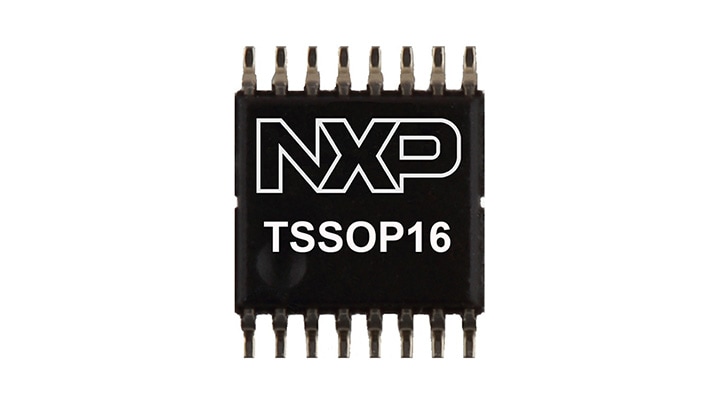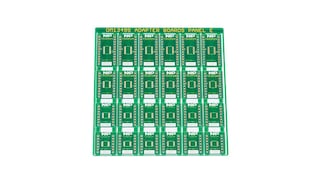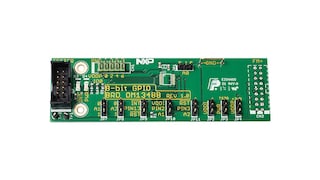The PCA6408A is an 8-bit general purpose I/O expander that provides remote I/O
expansion for most microcontroller families via the I2C-bus interface.
NXP I/O expanders provide a simple solution when additional I/Os are needed while
keeping interconnections to a minimum, for example, in battery-powered mobile
applications for interfacing to sensors, push buttons, keypad, etc. In addition to providing
a flexible set of GPIOs, it simplifies interconnection of a processor running at one voltage
level to I/O devices operating at a different (usually higher) voltage level. The PCA6408A
has built-in level shifting feature that makes these devices extremely flexible in mixed
signal environments where communication between incompatible I/O voltages is required.
Its wide VDD range of 1.65 V to 5.5 V on the dual power rail allows seamless
communications with next-generation low voltage microprocessors and microcontrollers
on the interface side (SDA/SCL) and peripherals at a higher voltage on the port side.
There are two supply voltages for PCA6408A: VDD(I2C-bus) and VDD(P). VDD(I2C-bus)
provides the supply voltage for the interface at the controller side (for example, a
microcontroller) and the VDD(P) provides the supply for core circuits and Port P. The
bidirectional voltage level translation in the PCA6408A is provided through VDD(I2C-bus).
VDD(I2C-bus) should be connected to the VDD of the external SCL/SDA lines. This indicates
the VDD level of the I2C-bus to the PCA6408A. The voltage level on Port P of the
PCA6408A is determined by the VDD(P).
The PCA6408A consists of one 8-bit Configuration (input or output selection), Input,
Output, and Polarity Inversion (active HIGH) register. At power-on, the I/Os are configured
as inputs. However, the system controller can enable the I/Os as either inputs or outputs by
writing to the I/O configuration bits. The data for each input or output is kept in the
corresponding Input or Output register. The polarity of the Input port register can be
inverted with the Polarity Inversion register, saving interrupts.
The system controller can reset the PCA6408A in the event of a time-out or other improper
operation by asserting a LOW in the RESET input. The power-on reset puts the registers
in their default state and initializes the I2C-bus/SMBus state machine. The RESET pin
causes the same reset/initialization to occur without de-powering the part.
The PCA6408A open-drain interrupt (INT) output is activated when any input state differs
from its corresponding Input port register state and is used to indicate to the system
controller that an input state has changed.
INT can be connected to the interrupt input of a microcontroller. By sending an interrupt
signal on this line, the remote I/O can inform the microcontroller if there is incoming data
on its ports without having to communicate via the I2C-bus. Thus, the PCA6408A can
remain a simple target device.
The device Port P outputs have 25 mA sink capabilities for directly driving LEDs while
consuming low device current.
One hardware pin (ADDR) can be used to program and vary the fixed I2C-bus address
and allow up to two devices to share the same I2C-bus or SMBus.






